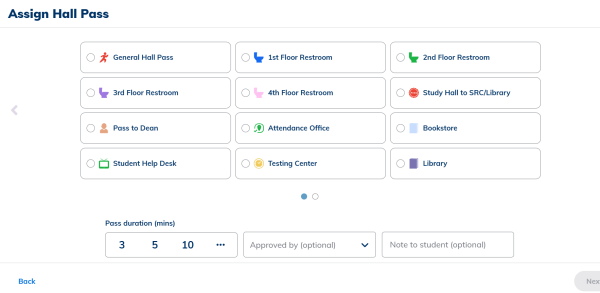OPRF institutes new phone policy

As students returned to Oak Park and River Forest High School after summer break, they were greeted with the introduction of phone homes, numbered pockets where students are required to place their phones at the beginning of each class. Although the mandatory phone homes are new, the expectation that students should not use their phones during classes has been building-wide for years.
The idea of phone homes was created in 2019 by the Cell Phone Committee at OPRF, led by counselor Meghan Cahill and history teacher Daniel Wolman.
To spread the word, the committee organized a movie showing of “Screenager” by Delaney Ruston in 2019, exclusive to Lake Theater. Brochures were passed out and trial periods of “away for the day” programs were executed in order to educate key stakeholders and the community. All of these projects were done in collaboration with the Mental Health Board of Oak Park, River Forest Township and District 200’s Wellness Board.
Their efforts to show how cell phones impact both mental and physical health, as well as distractibility, did not go unnoticed by administration and stakeholders, leading them to be invested in finding solutions.
The goal of the Cell Phone Committee was “finding a common sense solution for…what the faculty and administration saw as a widespread concern in the building (about) the overuse of cell phones, particularly in classrooms,” Wolman said. “Phone homes provided a solution to the ever-growing problem.”
The district administrators and committee explored many different projects such as shutting off the Wi-Fi, not having students bring their phones to school and having bins to collect phones at the beginning and end of each day.
But, over the course of two to three years, none of these ideas were as successful, cost-effective or attainable in such a large school as OPRF as the phone homes.
“It’s best practice to not have your phone during instructional time,” Cahill said.
“The complete disconnect from the phone” is what educators find to be “the most effective way students learn” and fully comprehend their material, said Cahill.
Before the shift in policy, the committee organized multiple meetings and surveys to get feedback from parents and staff, but mostly students, about cell phone usage. Wolman said students “knew that phones were getting in the way of their academics; taking all the time away during study hall and during class when they had a few minutes to kill.”
Wolman noticed that students knew phones were a growing problem impacting their learning but “didn’t know how to (manage their phones) in an organized way and break free from their phones in the classroom.”
As of this year, the school has seen and heard positive feedback through emails, conversations and testimonials between classes from faculty, parents and even students. All parties were largely content with the introduction of phone homes in classrooms, a pleasant surprise to the Cell Phone Committee. “Teachers, staff and students have approached me and said, ‘This is actually really great for me and my class,” Wolman said.
In a Trapeze survey with more than 50 responses from OPRF students, 40 to 41 percent of students found that although phone homes were enforced in all of their classes, it didn’t affect them as much as they thought it would.
OPRF junior Ava Konecki said, “I think implementing phone homes is a good way
to separate us, as students, from the devices that distract us every day.” Konecki thinks “it’s good to have a break because I don’t want to be addicted to my phone as it prevents me from getting work done in a timely fashion.”
Cameron Sameshima, also a junior at OPRF said, “The phone, even when it’s in my pocket, distracts me. By putting it far away from me, I feel less distracted.”
Not all students are in support of this new initiative. Sophomore Gracie Walton said “the phone home doesn’t help me focus. It actually makes me even more distracted, because instead of thinking about the work, all I can think about is what I’m missing on my phone.”
Despite all the discourse, faculty and administration find the phone homes will be a permanent addition to OPRF, while hoping for a future in which they aren’t necessary.
“It’s a commitment by the school to give teachers the space to have kids separate their phones and enforce a building-wide expectation so that there can be less distracted instruction and higher student engagement,” Cahill said.





